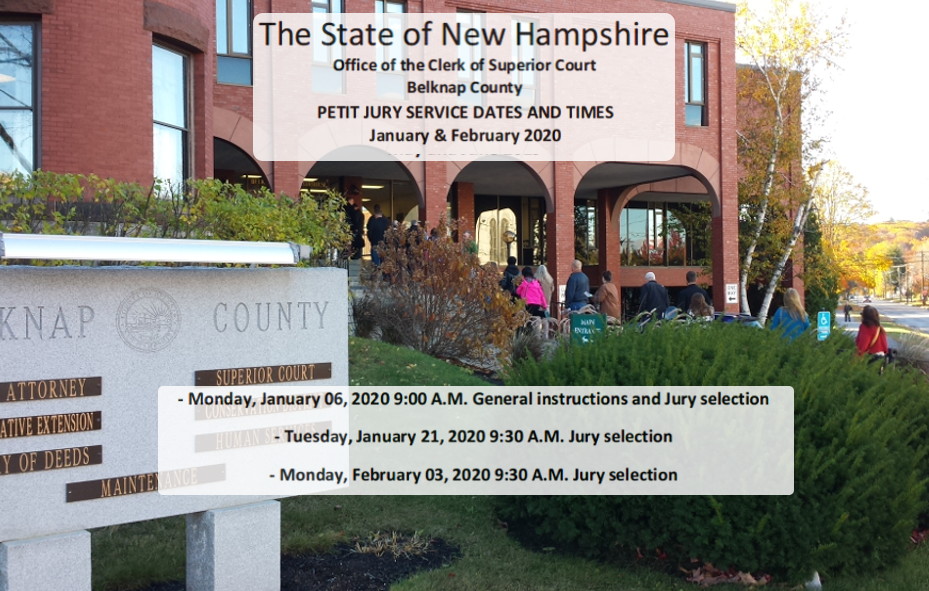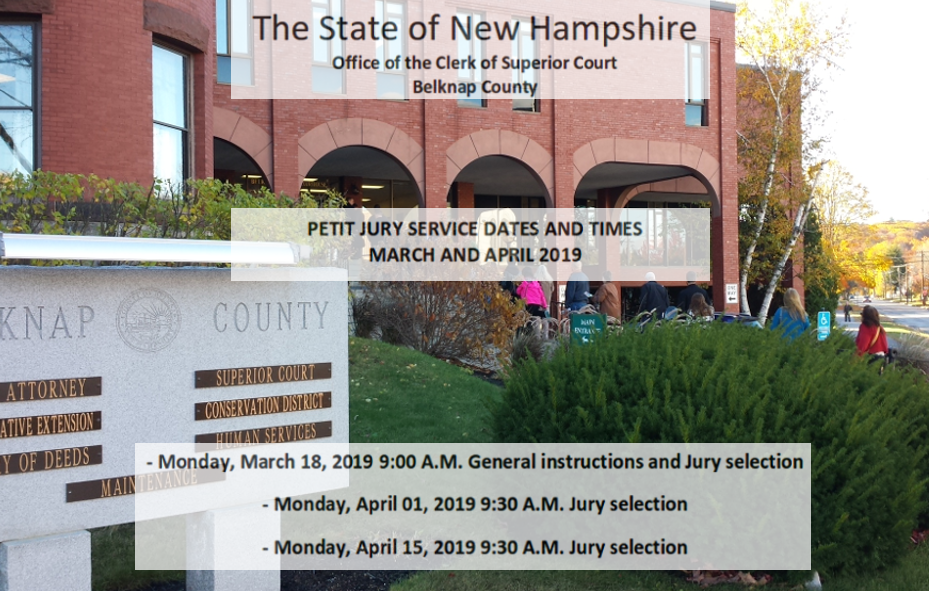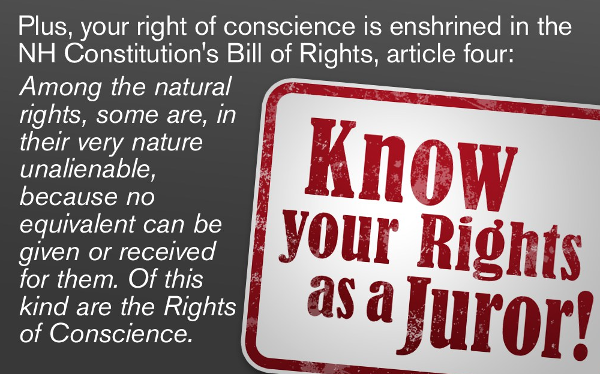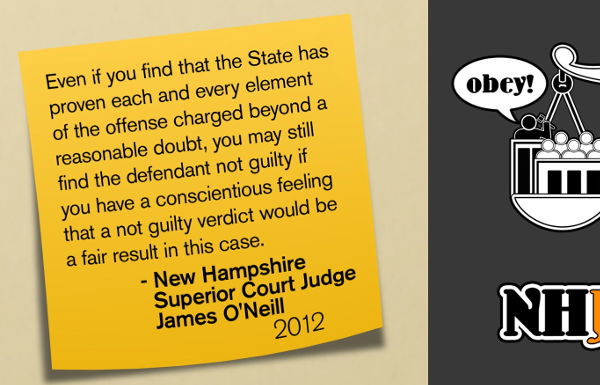The New Hampshire house passed on Wednesday, May 6, 2015, a bill restricting the sale or possession of synthetic drugs. The intent of the bill is to extend the ‘war on drugs’ to assorted synthetic mimics of cannabis such as ‘spice’.
While we can have a debate over the efficacy of prohibition, there is no question that we have a flawed system of reviewing legislation. This bill, SB 106, defines ‘synthetic drug’ by describing a long (11 pages found below) and complex list of chemical compounds. This bill was reviewed by the House Criminal Justice and Public Safety Committee. It is an open question as to this committee’s expertise to evaluate complex chemistry. In an attempt to determine what this definition of ‘synthetic drug’ might include a pharmacist was asked for their opinion. In reply the pharmacist said “The chemistry mentioned is over my head.”
Many natural and herbal products, and nutritional supplements may contain molecules which are captured in the definition of ‘synthetic drug’. One common item that is very likely to become a ‘synthetic drug’ is poppy seeds. According to Snopes, it is true: Indeed, something as innocuous as the poppy seeds on a bagel or muffin or in a slice of cake can make the drug-free look like heroin users.
State Representative Ed Comeau warns, “It attempts to create a mechanism whereby an infinitely expansive list will be created. If the banned chemicals are found in products sold to the public, a store owner will be fined.”
It is irresponsible for the house to pass a bill for which committee members are unqualified and received little testimony on such a highly technical and important detail. How this bill might effect the sale of many very useful natural and herbal products was given little to no consideration in the zeal to expand the war on people with substance abuse problems. As long as we continue to disregard the root cause of substance abuse, we will continue to hack at the symptoms and never ease the suffering.
IV. “Synthetic drug” means any substance within the following structural classes:
(a) Any compound containing a 2-(3-hydroxycyclohexyl)phenol structure with a substituent at the 5-position of the phenolic ring: whether or not substituted on the cyclohexyl ring to any extent.
(b) Any compound containing a 1-(1-naphthylmethyl)indene ring system with a substituent at the 3-position of the indene ring system: whether or not further substituted on the indene ring to any extent, and whether or not substituted on the naphthyl ring to any extent.
(c) Any compound containing an indole ring system with a substituent on the nitrogen atom and bearing an additional substituent at the 3-position of the indole ring system, with a linkage connecting the ring system to the substituent:
(1) Where the linkage connecting the indole ring system to the substituent at its 3-position is any of the following:
(A) Alkyl.
(B) Carbonyl.
(C) Ester.
(D) Thione.
(E) Thioester.
(F) Amino.
(G) Alkylamino.
(H) Amido.
(I) Alkylamido.
(2) Where the substituent at the 3-position of the indole ring system is, disregarding the linkage, any of the following groups:
(A) Naphthyl.
(B) Quinolinyl.
(C) Adamantyl.
(D) Phenyl.
(E) Cycloalkyl (limited to cyclopropyl, cyclobutyl, cyclopentyl, or cyclohexyl).
(F) Biphenyl.
(G) Allcylamido (limited to ethylamido, propylamido, butanamido, or pentanamido).
(H) Benzyl.
(I) Carboxylic acid.
(J) Ester.
(K) Ether.
(L) Phenylpropylamido.
(M) Phenylopropylamino.
(3) Whether or not the substituent at the 3-position of the indole ring system, disregarding the linkage, is further substituted to any extent.
(4) Whether or not further substituted on the indole ring system to any extent.
(d) Any compound containing an indazole ring system with a substituent at the 1-position nitrogen atom and bearing an additional substituent at the 3-position of the indazole ring system, with a linkage connecting the ring system to the substituent:
(1) Where the linkage connecting the indazole ring system to the substituent at its 3-position is any of the following:
(A) Alkyl.
(B) Carbonyl.
(C) Ester.
(D) Thione.
(E) Thioester.
(F) Amino.
(G) Alkylamino.
(H) Amido.
(I) Alkylamido.
(2) Where the substituent at the 3-position of the indazole ring system is, disregarding the linkage, any of the following groups:
(A) Naphthyl.
(B) Quinolinyl.
(C) Adamantyl.
(D) Phenyl.
(E) Cycloalkyl (limited to cyclopropyl, cyclobutyl, cyclopentyl, or cyclohexyl).
(F) Biphenyl.
(G) Alkylamido (limited to ethylamido, propylamido, butanamido, or pentanamido).
(H) Benzyl.
(I) Carboxylic acid.
(J) Ester.
(K) Ether.
(L) Phenylpropylamido.
(M) Phenylopropylamino.
(3) Whether or not the substituent at the 3-position of the indazole ring system, disregarding the linkage, is further substituted to any extent.
(4) Whether or not further substituted on the indazole ring system to any extent.
(e) Any compound containing a pyrrole ring with a substituent on the nitrogen atom and bearing an additional substituent at the 3-position of the pyrrole ring, with a linkage connecting the ring to the substituent:
(1) Where the linkage connecting the pyrrole ring to the substituent at its 3-position is any of the following:
(A) Alkyl.
(B) Carbonyl.
(C) Ester.
(D) Thione.
(E) Thioester.
(F) Amino.
(G) Alkylamino.
(H) Amido.
(I) Alkylamido.
(2) Where the substituent at the 3-position of the pyrrole ring is, disregarding the linkage, any of the following groups:
(A) Naphthyl.
(B) Quinolinyl.
(C) Adamantyl.
(D) Phenyl.
(E) Cycloalkyl (limited to cyclopropyl, cyclobutyl, cyclopentyl, or cyclohexyl).
(F) Biphenyl.
(G) Alkylamido (limited to ethylamido, propylamido, butanamido, or pentanamido).
(H) Benzyl.
(I) Carboxylic acid.
(J) Ester.
(K) Ether.
(L) Phenylpropylamido.
(M) Phenylopropylamino.
(3) Whether or not the substituent at the 3-position of the pyrrole ring, disregarding the linkage, is further substituted to any extent.
(4) Whether or not further substituted on the pyrrole ring to any extent.
(f) Any compound containing a pyrazole ring with a substituent at the 1-position nitrogen atom and bearing an additional substituent at the 3-position of the pyrazole ring with a linkage connecting the ring to the substituent:
(1) Where the linkage connecting the pyrazole ring to the substituent at its 3-position is any of the following:
(A) Alkyl.
(B) Carbonyl.
(C) Ester.
(D) Thione.
(E) Thioester.
(F) Amino.
(G) Alkylamino.
(H) Amido.
(I) Alkylamido.
(2) Where the substituent at the 3-position of the pyrazole ring is, disregarding the linkage, any of the following groups:
(A) Naphthyl.
(B) Quinolinyl.
(C) Adamantyl.
(D) Phenyl.
(E) Cyclopentyl, or cyclohexyl.
(F) Cycloalkyl (limited to cyclopropyl, cyclobutyl, or biphenyl).
(G) Alkylamido (limited to ethylamido, propylamido, butanamido, or pentanamido).
(H) Benzyl.
(I) Carboxylic acid.
(J) Ester.
(K) Ether.
(L) Phenylpropylamido.
(M) Phenylopropylamino.
(3) Whether or not the substituent at the 3-position of the pyrazole ring, disregarding the linkage, is further substituted to any extent.
(4) Whether or not further substituted on the pyrazole ring to any extent.
(g) Any compound containing a pyrazole ring with a substituent at the 1-position nitrogen atom and bearing an additional substituent at the 3-position of the pyrazole ring with a
linkage connecting the ring to the substituent:
(1) Where the linkage connecting the pyrazole ring to the substituent at its 3 position is any of the following:
(A) Alkyl.
(B) Carbonyl.
(C) Ester.
(D) Thione.
(E) Thioester.
(F) Amino.
(G) Alkylamino.
(H) Amido.
(I) Alkylamido.
(2) Where the substituent at the 3 position of the pyrazole ring is, disregarding the linkage, any of the following groups:
(A) Naphthyl.
(B) Quinolinyl.
(C) Adamantyl.
(D) Phenyl.
(E) Cycloalkyl (limited to cyclopropyl, cyclobutyl, cyclopentyl, or cyclohexyl).
(F) Biphenyl.
(G) Alkylamido (limited to ethylamido, propylamido, butanamido, or pentanamido).
(H) Benzyl.
(I) Carboxylic acid.
(J) Ester.
(K) Ether.
(L) Phenylpropylamido.
(M) Phenylpropylamino.
(3) Whether or not the substituent at the 3 position of the pyrazole ring, disregarding the linkage, is further substituted to any extent.
(4) Whether or not further substituted on the pyrazole ring to any extent.
(h) Any compound containing a naphthalene ring system with a substituent on the 1 position carbon atom and bearing an additional substituent at the 4 position of the naphthalene ring system, with a linkage connecting the ring system to the substituent:
(1) Where the linkage connecting the naphthalene ring system to the substituent at its 4 position is any of the following:
(A) Alkyl.
(B) Carbonyl.
(C) Ester.
(D) Thione.
(E) Thioester.
(F) Amino.
(G) Alkylamino.
(H) Amido.
(I) Alkylamido.
(2) Where the substituent at the 4 position of the naphthalene ring system is, disregarding the linkage, any of the following groups:
(A) Naphthyl.
(B) Quinolinyl.
(C) Adamantyl.
(D) Phenyl.
(E) Cycloalkyl (limited to cyclopropyl, cyclobutyl, cyclopentyl, or cyclohexyl).
(F) Biphenyl.
(G) Alkylamido (limited to ethylamido, propylamido, butanamido, or pentanamido).
(H) Benzyl.
(I) Carboxylic acid.
(J) Ester.
(K) Ether.
(L) Phenylpropylamido.
(M) Phenylpropylamino.
(3) Whether or not the substituent at the 4 position of the naphthalene ring system, disregarding the linkage, is further substituted to any extent.
(4) Whether or not further substituted on the naphthalene ring system to any extent.
(i) Any compound containing a carbazole ring system with a substituent on the nitrogen atom and bearing an additional substituent at the 1, 2, or 3 position of the carbazole ring system, with a linkage connecting the ring system to the substituent:
(1) Where the linkage connecting the carbazole ring system to the substituent at its 1, 2, or 3 position is any of the following:
(A) Alkyl.
(B) Carbonyl.
(C) Ester.
(D) Thione.
(E) Thioester.
(F) Amino.
(G) Alkylamino.
(H) Amido.
(I) Alkylamido.
(2) Where the substituent at the 1, 2, or 3 position of the carbazole ring system is, disregarding the linkage, any of the following groups:
(A) Naphthyl.
(B) Quinolinyl.
(C) Adamantyl.
(D) Phenyl.
(E) Cycloalkyl (limited to cyclopropyl, cyclobutyl, cyclopentyl, or cyclohexyl).
(F) Biphenyl.
(G) Alkylamido (limited to ethylamido, propylamido, butanamido, or pentanamido).
(H) Benzyl.
(I) Carboxylic acid.
(J) Ester.
(K) Ether.
(L) Phenylpropylamido.
(M) Phenylpropylamino.
(3) Whether or not the substituent at the 1, 2, or 3 position of the carbazole ring system, disregarding the linkage, is further substituted to any extent.
(4) Whether or not further substituted on the carbazole ring system to any extent.
(j) Any substance which includes, but is not limited to the following:
(1) QUCHIC/BB-22.
(2) STS-135.
(3) APICA/SDB-001.
(4) ADBICA.
(5) ADB-FUBINACA.
(6) AB-001.
(7) SDB-006.
(8) EG-018.
(9) CB-13.
(10) 5-chloro-UR-144.
(11) FUB-PB-22.
(k) Any synthetic cathinone, which shall be defined as any of the following chemical structures, their salts, isomers and salts of isomers, whenever the existence of these is possible within the specific chemical designation, including any compound structurally derived from 2-aminopropanal by substitution at the 1-position with a monocyclic or fused polycyclic ring system, including compounds further modified by:
(1) Substitution on the ring system to any extent (including, but not limited to alkyl, alkoxy, alkylenedioxy, haloalkyl, or halide substituents), whether or not further substituted in the ring system by other substituents; and/or
(2) Substitution at the 3-position with a saturated or unsaturated hydrocarbon substituent; and/or
(3) Mono- or di- substitution at the 2-amino nitrogen atom with saturated or unsaturated hydrocarbon groups, or inclusion of the 2-amino nitrogen atom in a cyclic structure, whether or not that cyclic structure contains any further substitutions;
(4) Includes, but is not limited to:
(A) 3,4-dimethylmethcathinone (3,4-DMMC)
(B) Beta-keto-ethylbenzodioxolylbutanamine (eutylone)
(C) 3,4-methylenedioxy-N-ethylcathinone (ethylone)
(5) 4-methoxymethcathinone (methedrone) This term shall not include substances that are otherwise scheduled under the Controlled Substances Act: (e.g. cathinone, methcathinone, methylone, mephedrone, MDPV, diethylpropion, pyrovalerone), are FDA-approved pharmaceutical products (i.e. bupropion) or are FDA-approved research products.
(l) Any synthetic psychoactive compound or substance which shall be defined as substances and their salts, isomers, and salts of isomers, wherever the existence of these is possible, within the following specific chemical designation:
(1) 2,5-dimethoxy-4-methyl-N-(2-methoxybenzyl)phenethylamine (also known as 25D-NBOMe).
(2) 2,5-dimethoxy-4-ethyl-N-(2-methoxybenzyl)phenethylamine (also known as 25E-NBOMe).
(3) 2,5-dimethoxy-4-nitro-N-(2-methoxybenzyl)phenethylamine (also known as 25N-NBOMe).
(4) 2,5-dimethoxy-4-n-propyl-N-(2-methoxybenzyl)phenethylamine (also known as 25P-NBOMe).
(5) 2,5-dimethoxy-4-ethylthio-N-(2-methoxybenzyl)phenethylamine (also known as 25T2-NBOMe).
(6) 2,5-dimethoxy-4-sec-propylthio-N-(2-methoxybenzyl)phenethylamine (also known as 25T4-NBOMe).
(7) 2,5-dimethoxy-4-n-propylthio-N-(2-methoxybenzyl)phenethylamine (also known as 25T7-NBOMe).
(8) N-(2-methoxybenzyl)-3,4-dimethoxyamphetamine (also known as 34-DMA NBOMe).
(9) 1-(1-Benzofuran-2-yl)propan-2-amine (also known as 2-APB).
(10) 5-(2-aminopropyl)-2,3-dihydrobenzofuran (also known as 5-APDB).
(11) 2-(2-ethylaminopropyl)benzofuran (also known as 2-EAPB).
(12) 1-(Benzofuran-5-yl)-N-methylpropan-2-amine (also known as 5-MAPB).
(13) 3,4-dichloromethylphenidate.
(14) 5,6-methylenedioxy-2-aminoindan (also known as 5,6-MDAI).
(15) 4-hydroxy-diethyltryptamine (also known as 4-hydroxy-DET).
(16) 4-methoxyphencyclidine (also known as 4-methoxy-PCP or methoxydine).
(17) 3,4-dichloro-N-([1-(dimethylamino)cyclohexyl]methyl)benzamide (also known as AH-7921).
(18) Benocyclidine (also known as BTCP).
(19) Methoxetamine (also known as MXE).
(20) 3-Methyl-6-[3-trifluoromethyl)phenyl]-1,2,4-triazolo[4,3-b]pyridazine (also known as CL218872).
(21) 1-(1,2-diphenylethyl)piperidine (also known as diphenidine).
(22) 1-Cyclohexyl-4-(1,2-diphenylethyl)piperazine (also known as MT-45).
(23) (3-diethylamino-2,2-dimethylpropyl)-4-nitrobenzoate (also known as nitrocaine or nitracaine).
(24) (E)-4-chloro-N-1(phenylethylpiperidin-2-ylidene)sulfonamide (also known as W-15).
(25) (E)-4-chloro-N-(1-(4-nitrophenylethyl)piperidin-2-ylidene)sulfonamide (also known as W-18).
(26) 4-fluoroamphetamine.
(27) 1-(thiophen-2-yl)-2-methylaminopropane (also known as methiopropamine).
(m) This definition shall not include:
(1) Endocannabinoids that are naturally found in the human body;
(2) Delta-9 Tetrahydrocannabinol (THC) or other marijuana-derived cannabinoids, in the form of marinol, dronabinol, or another generic pharmaceutical equivalent, provided the medication has been issued as the result of a valid prescription; or
(3) Any other drugs that have cannabinoid receptor activity that are currently approved by the United States Food and Drug Administration for medical use; or marijuana and extracts of marijuana authorized for therapeutic use pursuant to RSA 126-X.
359-O:3 Prohibited Activities. No person or business shall sell, barter, give, publicly display for sale or attempt to sell, or to possess or transport, any material, compound, mixture, or preparation which contains any quantity of a synthetic drug or its optical, positional, and geometric isomers, salts, and salts of isomers, whenever the existence of such isomers, salts, and salts of isomers is possible within the specific chemical designation as defined in this chapter.
359-O:4 Exceptions. It shall not be an offense under this chapter if the person or business was acting at the direction of federal, state, or local law enforcement officers to enforce or ensure compliance with this chapter prohibiting the sale of the substances listed in RSA 359-O:2.
![]() With Bitcoin Cash your transaction fee is less than a penny!
With Bitcoin Cash your transaction fee is less than a penny! 1CMr2FWzj7fTUt8QNTVVZbcwQHEiTg9Lep
1CMr2FWzj7fTUt8QNTVVZbcwQHEiTg9Lep













